BAKKIES used to be distinctly utilitarian things until one day the lifestyle set commandeered them as modes of fashionable outdoor activity transport. In addition, the prosperous self-employed began using them as all-purpose vehicles. Both groups essentially wanted a load-carrying car rather than a commercial vehicle, and so the modern family-oriented pick-up evolved.
In those early days, most manufacturers simply dressed up existing products with bull bars, a sleek fibreglass canopy or a two-tone paint job, fitted electric windows and maybe a CD player. Rubber mats were banished and in came carpets.
During the 1990s, every middle manager with a family wanted a double cab as a company car and, understandably, the models sold like hot vetkoek.
In the early 2000s, Nissan changed the game with the Navara, a premium bakkie with butch looks and the kind of equipment and interior space that rivalled a family sedan.
Now the company has launched the latest generation in many parts of the world, but for some reason, SA is being made to wait.
The new Navara started life as a blank canvas project. Even the name hasn’t escaped a makeover. The NP300 Navara designation follows the new global house style for Nissan commercial vehicles, denoting the type of vehicle (Nissan Pick-up) and gross vehicle weight (three tonnes).
The company hasn’t tinkered too much with the outer skin of the new model. There’s a revised front grille, a re-styled bumper and a sleeker bonnet. It looks good in the metal, yet is still able to carry one-tonne loads and pull 3.5 tonnes on the rear hook — but not both at the same time. To do that you’ll need to reduce the tray load by half a tonne.
In the load tray, the innovative C-channel tie-down system remains. It consists of five channels — four running its length and one its width — plus four heavy-duty cleats that let you position stable tie-down points anywhere along each channel.
In the UK, the Navara is again offered in King Cab (KC) or double cab (DC) form and both versions offer rear seats, but while the DC has a traditional bench in the back and four proper doors, the KC has two cinema-style folding rear seats and small back doors hinged on the rearmost edge.
The interior is also much improved. There’s piano black trim and metal-effect detailing, plus a touchscreen infotainment system with satnav and all-round view monitor, which is very handy on a vehicle this big.
Although the Navara’s cabin looks SUV-like in quality, it’s still a commercial vehicle underneath. The leather-wrapped steering wheel and gear lever feel good, but those expecting dashboard soft-touch plastics will be disappointed. Everything is solid and will no doubt be tough as old boots, but the plastics are hard to the touch.
Where the company is setting a precedent is in the suspension, which is often a bugbear with bakkies. Gone is the bone-shaking leaf-sprung suspension on DC models which has been mercifully replaced by a new independent five-link coil system which provides a much more refined and well-behaved ride.
Unfortunately, all KC models retain the rear leaf-spring arrangement. Nissan SA were shy in confirming engine and transmission line-up for the new SA-bound Navara, but expect it to launch with the choice of two or four-wheel drive and the option of a standard six-speed manual or a seven-speed automatic gearbox.
South African buyers will welcome the new 2.3l Renault-Nissan dCi turbo-diesel which is claimed to be up to 24% more efficient than the aging 2.5l unit it replaces and which Nissan says is the "cleanest and most economical in its sector".
Available with two power output options, 120kW and 409Nm and 140kW with 450Nm, the range-topping version introduces twin turbocharging technology — a first for Nissan in this segment.
The current 3.0l V6 dCi delivering 170kW and 550Nm of torque is expected to remain.
The NP300 Navara offers the best ride comfort of any unladen pick-up I have driven. The previous generation and other leaf-sprung competitors tend to be bouncy and rather unsettled, but the new model feels much more stable and displays better road manners.
During a 180km drive across north English roads to reach a demanding off-road section, the improvement in driveability was immediately noticeable.
Nissan’s marketing gurus will have you believe that the new Navara drives like a conventional SUV. It doesn’t. General handling is much improved though and you can carry a surprising amount of speed through the bends and sudden direction changes are accomplished without fuss.
Performance is respectable with either engine output. It’s no ball of fire, but is always able to keep pace with the traffic.
Despite the improved on-road characteristics, the Navara is still more than capable off-road. The 4WD variant comes complete with a low-range box, hill descent control and excellent axle articulation. If you want to get really serious, a rear diff-lock is a definite box tick from the options list. Fortunately, it was fitted to all the test vehicles.
Nissan’s proven electronically controlled four-wheel-drive system has three settings: 2Hi, 4Hi and 4Lo. A more lightweight design helps it feel more nimble and agile than its predecessor, while the 450Nm of torque means there’s plenty of push when needed.
Up steep and rocky trails and down deep, rain-carved gullies, the Navara didn’t even break into a sweat. Unlike me.
The new rear suspension on the DC eliminates much of the poor ride quality suffered by the majority of pick-ups, while fuel economy and carbon dioxide emissions are improved with the introduction of the new 2.3 dCi diesel engine.
However, there are reminders that the Navara is, in essence, a working vehicle. There’s no getting away from the fact that down below, there’s a heavy-duty live axle attached to a ladder-frame chassis.
Still, the NP300 Navara will be one of the best pick-ups to have reached South African shores when it arrives later this year.
While not quite blurring category lines, it narrows the gap between rough and ready pick-ups and road-biased SUVs.
-
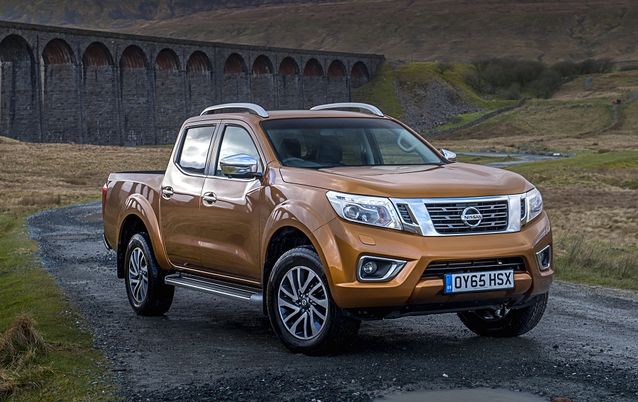
The new Navara still has masculine looks but is a little more curvaceous. Picture: NISSAN (GB) LTD
-
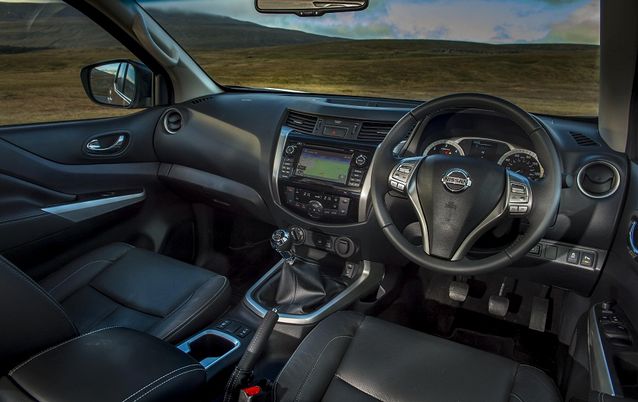
The interior is more plush but some of the hard plastics remind you that this is a working vehicle at heart. Picture: NISSAN (GB) LTD
-
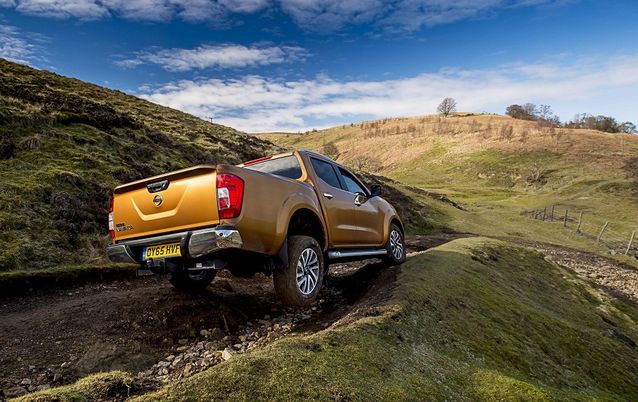
The new Navara romped over the English countryside with ease. Picture: NISSAN (GB) LTD
-
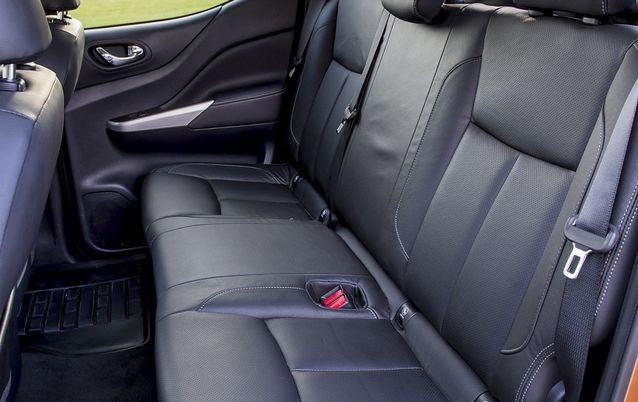
Coil spring suspension at the rear dramatically improves the ride compared to the old model and leaf-sprung rivals. Picture: NISSAN (GB) LTD
BAKKIES used to be distinctly utilitarian things until one day the lifestyle set commandeered them as modes of fashionable outdoor activity transport. In addition, the prosperous self-employed began using them as all-purpose vehicles. Both groups essentially wanted a load-carrying car rather than a commercial vehicle, and so the modern family-oriented pick-up evolved.
In those early days, most manufacturers simply dressed up existing products with bull bars, a sleek fibreglass canopy or a two-tone paint job, fitted electric windows and maybe a CD player. Rubber mats were banished and in came carpets.
During the 1990s, every middle manager with a family wanted a double cab as a company car and, understandably, the models sold like hot vetkoek.
In the early 2000s, Nissan changed the game with the Navara, a premium bakkie with butch looks and the kind of equipment and interior space that rivalled a family sedan.
Now the company has launched the latest generation in many parts of the world, but for some reason, SA is being made to wait.
The new Navara started life as a blank canvas project. Even the name hasn’t escaped a makeover. The NP300 Navara designation follows the new global house style for Nissan commercial vehicles, denoting the type of vehicle (Nissan Pick-up) and gross vehicle weight (three tonnes).
The company hasn’t tinkered too much with the outer skin of the new model. There’s a revised front grille, a re-styled bumper and a sleeker bonnet. It looks good in the metal, yet is still able to carry one-tonne loads and pull 3.5 tonnes on the rear hook — but not both at the same time. To do that you’ll need to reduce the tray load by half a tonne.
In the load tray, the innovative C-channel tie-down system remains. It consists of five channels — four running its length and one its width — plus four heavy-duty cleats that let you position stable tie-down points anywhere along each channel.
In the UK, the Navara is again offered in King Cab (KC) or double cab (DC) form and both versions offer rear seats, but while the DC has a traditional bench in the back and four proper doors, the KC has two cinema-style folding rear seats and small back doors hinged on the rearmost edge.
The interior is also much improved. There’s piano black trim and metal-effect detailing, plus a touchscreen infotainment system with satnav and all-round view monitor, which is very handy on a vehicle this big.
Although the Navara’s cabin looks SUV-like in quality, it’s still a commercial vehicle underneath. The leather-wrapped steering wheel and gear lever feel good, but those expecting dashboard soft-touch plastics will be disappointed. Everything is solid and will no doubt be tough as old boots, but the plastics are hard to the touch.
Where the company is setting a precedent is in the suspension, which is often a bugbear with bakkies. Gone is the bone-shaking leaf-sprung suspension on DC models which has been mercifully replaced by a new independent five-link coil system which provides a much more refined and well-behaved ride.
Unfortunately, all KC models retain the rear leaf-spring arrangement. Nissan SA were shy in confirming engine and transmission line-up for the new SA-bound Navara, but expect it to launch with the choice of two or four-wheel drive and the option of a standard six-speed manual or a seven-speed automatic gearbox.
South African buyers will welcome the new 2.3l Renault-Nissan dCi turbo-diesel which is claimed to be up to 24% more efficient than the aging 2.5l unit it replaces and which Nissan says is the "cleanest and most economical in its sector".
Available with two power output options, 120kW and 409Nm and 140kW with 450Nm, the range-topping version introduces twin turbocharging technology — a first for Nissan in this segment.
The current 3.0l V6 dCi delivering 170kW and 550Nm of torque is expected to remain.
The NP300 Navara offers the best ride comfort of any unladen pick-up I have driven. The previous generation and other leaf-sprung competitors tend to be bouncy and rather unsettled, but the new model feels much more stable and displays better road manners.
During a 180km drive across north English roads to reach a demanding off-road section, the improvement in driveability was immediately noticeable.
Nissan’s marketing gurus will have you believe that the new Navara drives like a conventional SUV. It doesn’t. General handling is much improved though and you can carry a surprising amount of speed through the bends and sudden direction changes are accomplished without fuss.
Performance is respectable with either engine output. It’s no ball of fire, but is always able to keep pace with the traffic.
Despite the improved on-road characteristics, the Navara is still more than capable off-road. The 4WD variant comes complete with a low-range box, hill descent control and excellent axle articulation. If you want to get really serious, a rear diff-lock is a definite box tick from the options list. Fortunately, it was fitted to all the test vehicles.
Nissan’s proven electronically controlled four-wheel-drive system has three settings: 2Hi, 4Hi and 4Lo. A more lightweight design helps it feel more nimble and agile than its predecessor, while the 450Nm of torque means there’s plenty of push when needed.
Up steep and rocky trails and down deep, rain-carved gullies, the Navara didn’t even break into a sweat. Unlike me.
The new rear suspension on the DC eliminates much of the poor ride quality suffered by the majority of pick-ups, while fuel economy and carbon dioxide emissions are improved with the introduction of the new 2.3 dCi diesel engine.
However, there are reminders that the Navara is, in essence, a working vehicle. There’s no getting away from the fact that down below, there’s a heavy-duty live axle attached to a ladder-frame chassis.
Still, the NP300 Navara will be one of the best pick-ups to have reached South African shores when it arrives later this year.
While not quite blurring category lines, it narrows the gap between rough and ready pick-ups and road-biased SUVs.






















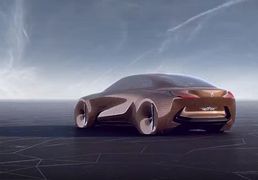

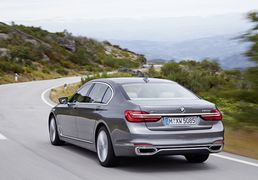





Change: -0.47%
Change: -0.57%
Change: -1.76%
Change: -0.34%
Change: 0.02%
Data supplied by Profile Data
Change: -1.49%
Change: 0.08%
Change: -0.47%
Change: 0.00%
Change: -0.04%
Data supplied by Profile Data
Change: -0.34%
Change: 0.03%
Change: -0.10%
Change: -0.22%
Change: -0.69%
Data supplied by Profile Data
Change: -0.28%
Change: -1.15%
Change: -0.07%
Change: -1.21%
Change: -0.22%
Data supplied by Profile Data